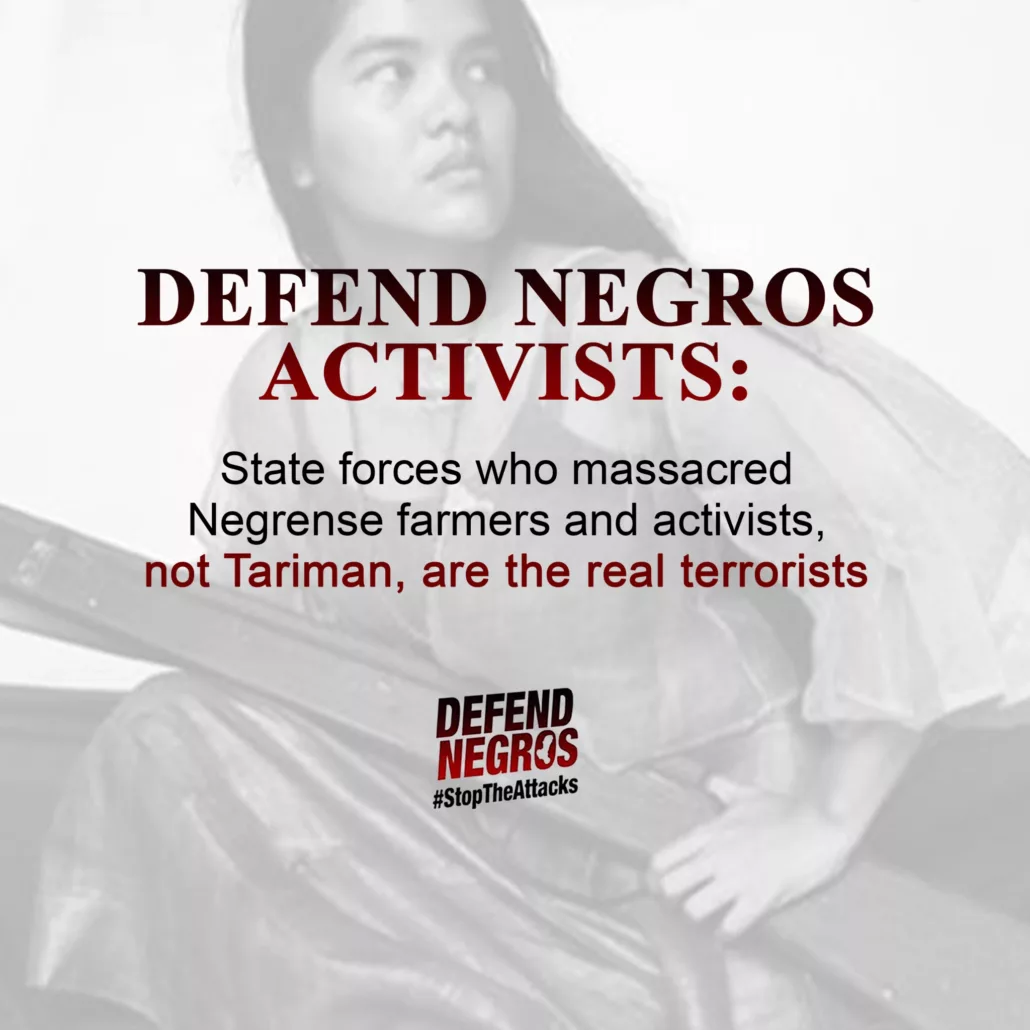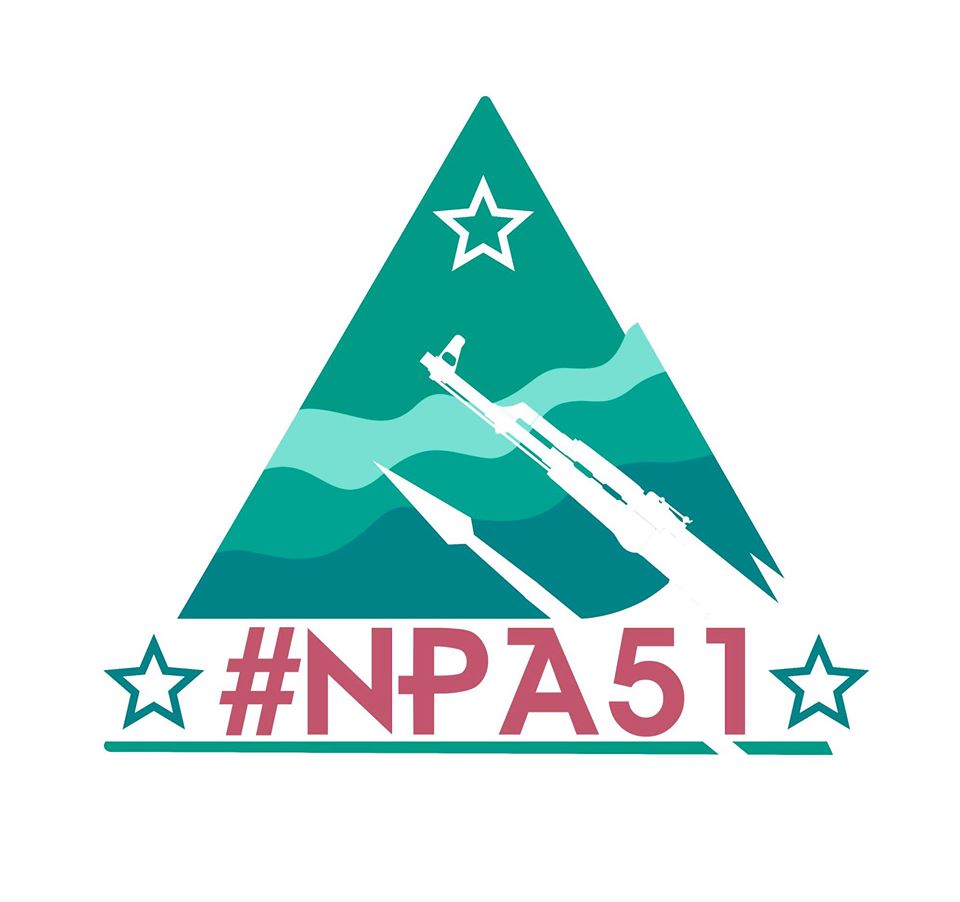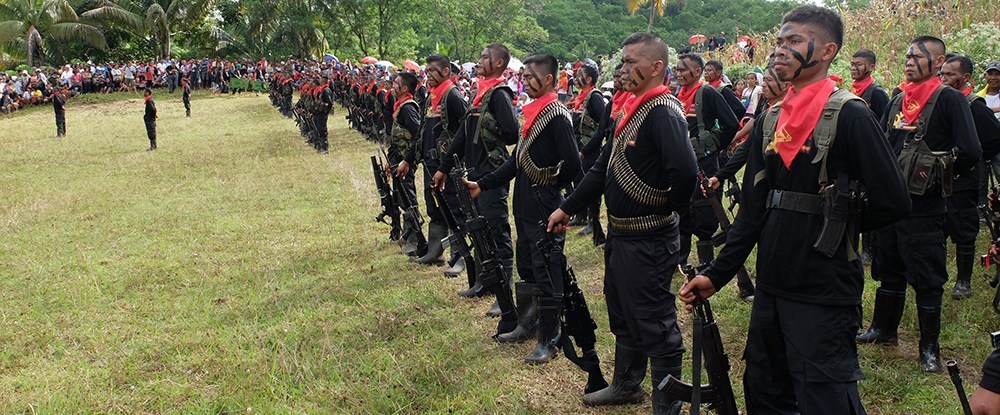The death of my daughter Kerima
I went into denial, even as I reminded myself it would be better to accept what had happened
This article was originally published by The Diarist.PH. It is republished here with permission.
By Pablo Tariman
As I write this, it’s been 14 days since my daughter Kerima died. (Twenty-two days as of this posting.–Ed.)
It was not a peaceful death, as it turned out. An encounter between military and rebel groups at 6 a.m. on Friday, August 20, 2021, left three dead, one soldier and two reported insurgents.
I got a mysterious message saying one of the casualties in the encounter was a “young woman” with her companion. I refused to believe my daughter was that “young woman.”
The next day, Saturday, August 21, a friend from Bacolod told me the military had identified the female casualty as Ka Ella. I asked my friend to send me a picture that appeared in the military FB.
In my Messenger, I saw a picture of a woman left alone on a mountain trail. Her face was blurred. Her arm was almost severed after being riddled with bullets.
I know how my daughter looked like, then and now. After one more hard look at the picture, I realized the dead woman was my daughter Kerima, who turned 42 last May 29.
I had been ready for this years back. I knew it would come to this.
We had some arguments about this. But all this is water under the bridge, so to speak. In the end, I respected her choice.
It is easy to say you are prepared to see the worst happening to your daughter because of her involvement in the movement. But when you see her in the picture, cold and lifeless on a mountain trail, you know you need more courage to accept what has happened to her.
I was looking at her son, Emmanuel, that morning still asleep, when I accepted the news. My next predicament was how to break the news to him.
I knew I couldn’t do it.
The next day, her violent death was all over Facebook. The newspapers also carried news of the encounter. And always, she was identified as Ka Ella, also known by her real name, Kerima Lorena Tariman.
It is the first death in the family. She was the second of my three daughters.
The last time I saw her, she showed up in the city unannounced two years ago. She said it was better that we saw each other in a neutral place, definitely not in our house.
I knew she was preparing me for some big decisions she had made. We had very little conversation. She knew I had no other choice but to accept her decision.
After a few lingering moments, I kissed her on her forehead. Before she walked away, all I could say was, “Ingat, Kima.” Kima was how she was known in the family.
Still, she wanted to see more of her son, in my care since his grade school years. While I was doing my last concert at the Nelly Garden in Iloilo City, I met my grandson at an inn. He said someone would meet him and bring him to his mother.
The meeting was short, just an overnight stay. And he was back in Iloilo while I was preparing to travel with my performing artists after a farewell concert at Nelly Garden. By then, I had an idea why my daughter desperately needed to see her son before she totally disappeared.
And so her death was all over FB. I went into denial, even as I reminded myself it would be better to accept what had happened.
I asked a family friend to come to break the news to my grandson. I didn’t think I could handle it without turning the moment into a scene from a teleserye. And so the family friend arrived, condoled.
Then I asked him to take on the sad task of breaking the news to my grandson. He did it gently, from what I could figure out.
Minutes later, I saw my very composed grandson. No breaking down. No tears. I even saw him break into a wan smile

Minutes later, I saw my very composed grandson. No breaking down. No tears. I even saw him break into a wan smile as if to tell me, “This is not a big deal. I can handle this.”
The sad news transmitted, I let out a sigh of relief. My grandson is made of sterner stuff, and he showed it.
Then he told me he knew something was wrong just by reading my face that early morning, while I was trying to confirm the news.
I told myself we could move on and do what had to be done.
We had to fly to Bacolod to claim the body. We had to subject ourselves to swab tests to be able to board the plane. We had to apply for Silay and Bacolod passes so we could move around.
That was my first swab test. What if I tested positive? Did this mean only my grandson could fly to Bacolod while I had to face isolation?
The swab test results didn’t come on time by email for us to be able to board the Monday 8 a.m. flight. No way could you board the plane without the results of your swab test, the lady at the check-in counter told us.
We had to rebook our tickets for an afternoon flight. The swab test results finally arrived after the plane had left. My grandson and I tested negative!
We were able to rebook an early afternoon direct flight direct to Silay-Bacolod airport. Meanwhile, I had to brace myself for what I would see when I claimed my daughter’s body.
I have never been inside a funeral morgue. I have never been inside a dingy room full of dead bodies. Before the plane landed, I had to let go of my quiet sobbing. After all, this was not my idea of my last reunion with my daughter.
First order of the day upon arrival was a briefing with our lawyer, who happens to be a city councilor.
I needed to present papers to be able to claim my daughter’s body: birth certificate, marriage certificate, my grandson’s valid ID and birth certificate, and my ID and birth certificate.
Next was the moment of truth.
The funeral parlor aide guided us to a room full of dead bodies all covered in white cloth. I looked at my grandson. I wondered how he would react upon seeing his dead mother for the first time.
When I saw my daughter’s lifeless body on that steel stretcher, I let out a long, painful howl of grief. I embraced her and kissed her forehead like the last time we saw each other.
He saw how helpless I was that moment, so I felt my grandson’s hands massaging my shoulder as I cried endlessly. My grandson’s inner strength is unbelievable.
No tears for him. No breakdown like I had.
When I calmed down, I realized I had to attend to more details to be able to claim my daughter’s body.
The plan was to claim the body, bring it to a Bacolod crematorium, and fly home the next day with the urn.
Our lawyer appealed to the Silay city chief of police if we could cremate the body first and attend to the paper requirements later. He nodded to say yes.
But when the body was about to be pulled out from the funeral parlor for cremation, the chief of police said no.
We had to produce all the papers: death certificate, permit to bring the body from the Silay funeral parlor to the Bacolod crematorium, and another permit to transport the remains from Bacolod to Manila.
We had to secure a barangay clearance from the barrio where the incident happened. I was appalled to learn that my daughter actually operated in the shadow of Mt. Silay, where the sugar cane workers lived.
Meanwhile, the cremation had to wait until we were able to meet all the requirements. Our lawyer brought me to the office of the Silay chief of police to secure another requirement, a spot report filed by the local police.
Said he: ‘I can see that she is a very intelligent woman. But no government is perfect. Even people are not perfect’
We noticed the chief cop kept on revising the incident report. He made small talk while we waited for the final version.
Said he: “I can see that she is a very intelligent woman. But no government is perfect. Even people are not perfect.”
We left the chief cop’s office convinced we had a rewritten version of what happened during the bloody encounter at Hacienda Raymunda.
I read a study by my daughter where she detailed studies of the plight of sugar plantation workers at Hacienda Raymunda. The report said workers got as low as P500 a month for backbreaking work.
Ironically, she died in an encounter also at Hacienda Raymunda in Silay City.
I don’t know what to make of my final hours with my daughter.
After we secured all the permits, her body was finally released for cremation.
Our coordinators noticed we were being shadowed by police operatives, taking photos and videos of us everywhere we went.
Meanwhile, I scheduled a video call with my daughters based in Frankfurt and Pasig before the cremation. I saw my daughters weeping as they said goodbye to their rebel sister.
I couldn’t help sobbing as her body was shoved into the big burner. “We can give you the urn in two hours,” said the crematorium staff.
I had to make peace with myself as we flew back to Manila.
There was a tribute for her at the Bantayog ng Mga Bayani where friends, classmates, and supporters from all over the country paid their last respects Saturday, August 28.
They were so many who remembered her, the tribute lasted four hours.
For the first time, I saw a composite picture of my daughter as classmate, poet, warrior, and Red fighter. I didn’t realize she was feared as much as she was respected.
My wife and I recited poems in her honor. The tribute of her Frankfurt-based sister Karenina drew applause. She recalled how she spent one night in an Isabela jail in 2001 just to be with her sister Kerima, at least for one night of her sister’s month-long detention.
I thought the most poignant recollection during the tribute came from her son, Emmanuel, who closed the tribute.
My grandson recalled: “Bata pa lang ako, tinuruan nya na ako ng iba’t ibang bagay na hindi ko matututunan kung saan man at pinakita niya sa akin yung mundo at naiintindihan ko yung mga desisyon na ginawa nya at ng aking ama. Proud ako sa nanay ko, sa kanyang tapang, sa kanyang talino, hanggang sa huling hininga ay nasa isip niya ang masa at sambayanan. Hindi nagtatapos sa kanyang pagpanaw ang laban at marami pang magpapatuloy: tayong mga naririto. Mabuhay ka, Nanay, at maraming salamat sa lahat!” (Even when I was young, she taught me many things that I would not have learned elsewhere, and showed me the world, and I understand the decisions she and my father made. I am proud of my mother, of her courage, her intelligence, until her last breath the masses and the country were on her mind. The fight does not end with her death, and many will continue it: we who are here. Godspeed, Nanay, and thank you for everything!)
At home, I made a special place for her in the living room.
I cannot imagine her leaving us for good. And so I wrote this poem.
Stay a little longer my child
Keep your father company
As he welcomes another sunrise
Without you.
Stay a little longer my daughter
Keep your son company
He who is proud of you
In your prolonged absence.
Stay a little longer my child
Let’s reminisce days
As we welcomed sunrise
In the black sand of San Roque
And frolicking at the park
In the shadow of Mayon.
Stay a little longer my child
Keep your father warm
Watch over your only son
For a few days more.
Memories come and go
And far too few
I still see us welcoming sunrise
With the perfect cone
Towering over us.
Suddenly you are gone
The little child
Who once romped by the beach
Is suddenly limp and cold
Finished off by bullets
From ruthless strangers.
Stay a little longer my child
Let me just remember
The last hug
The kiss I planted on your forehead
In this room full of dead bodies.
I can’t help it
Letting out a howl of grief
Akin to a whining dog.
Your son remained strong
And unperturbed
As he massaged my shoulders
As I let out
A shrill whimper
Echoing through
The mortuary.
Now
I have to make the most
Out of this last plane ride
With your son and I
Huddled together
As we keep watch
Over your urn
From Silay to Manila.
You are home now
Stay a little longer my child
As we prepare
Your new home
Away from home.
I can see peace
And deliverance
In that small crypt
Just a walk away
From where we live.
Welcome home my child
There is peace and quiet
Waiting for you
In that small door
Leading to the great beyond.






